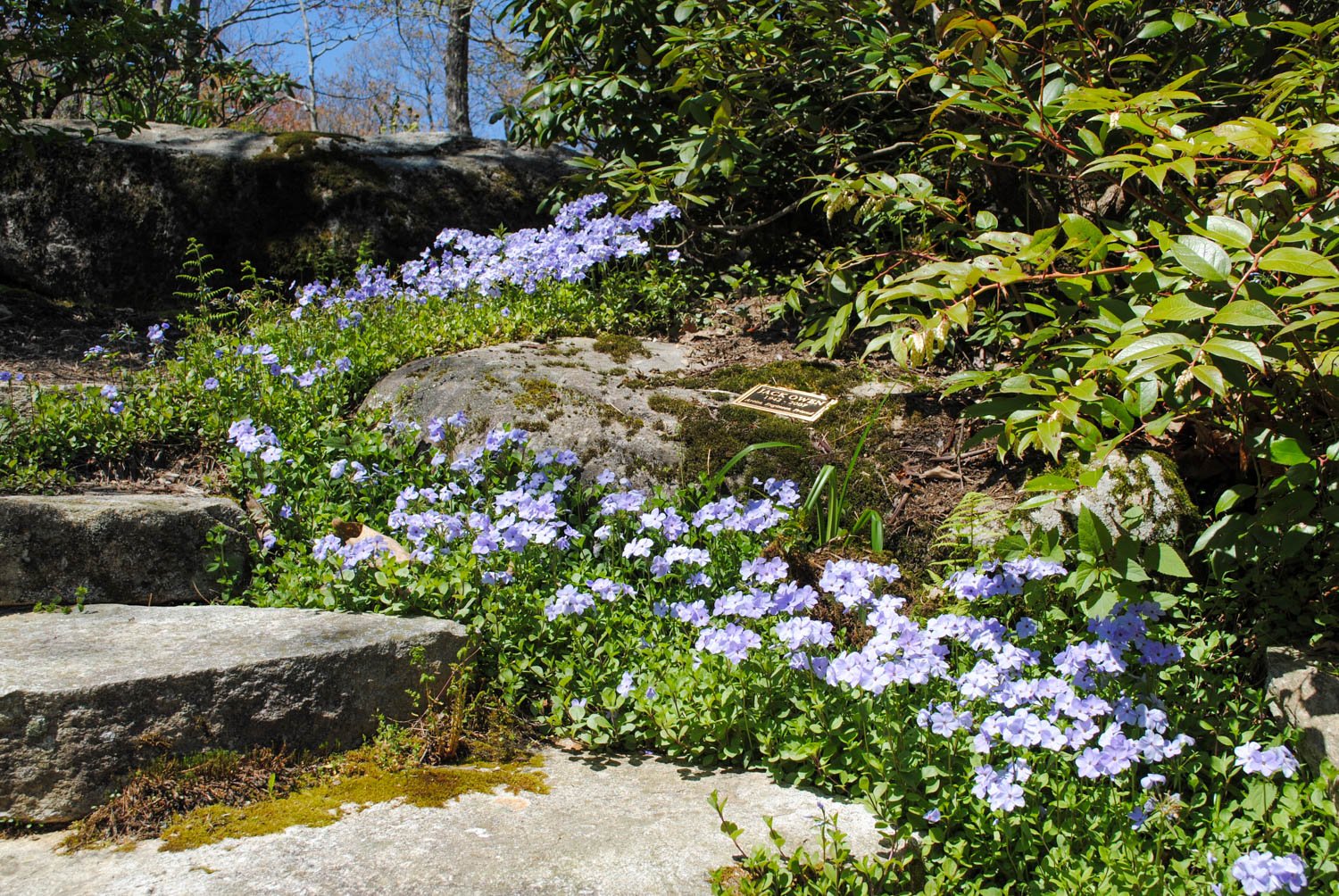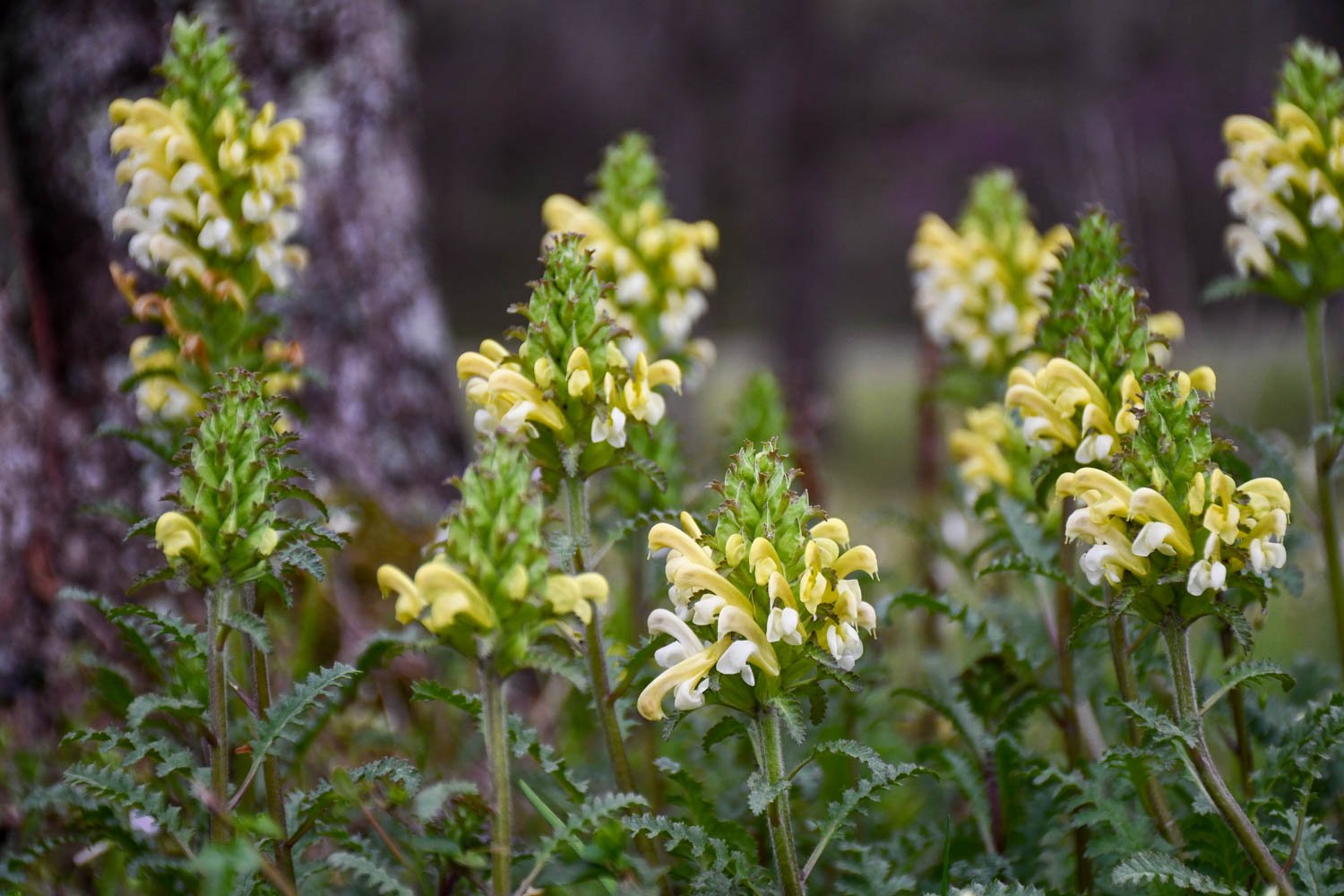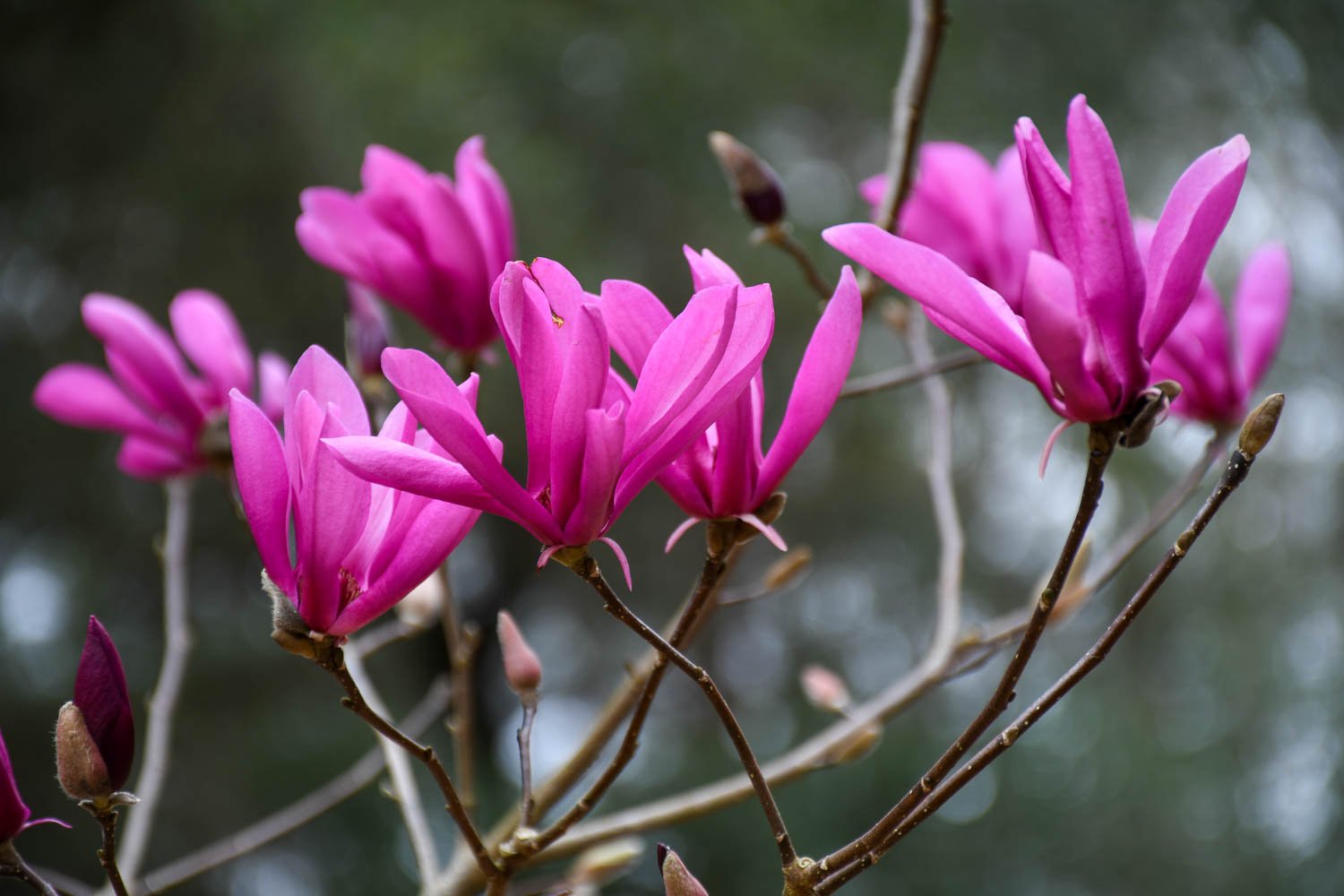We said goodbye to the last hints of spring this past week. A cold front brought us mornings in the low fifties with a good breeze.
Such a cool down is short lived at the end of May in east Texas for this week the heat and humidity have returned. We have begun the earnest transition to summer. Many of my spring wildflowers are fading, some all out going dormant and others giving their last hurrah as they produce seed. I have collected and already sown the progeny of Nemastylis geminiflora (prairie celestial), Callirhoe alcaeoides (poppy mallow), and Marshallia caespitosa (Barbara’s buttons) in hopes of having more next year.
As the summer cast of characters become more prevalent, I find that some like Echinacea sanguinea (sanguine coneflower) still straddle both seasons. They’ve been blooming now for a few weeks, and as we head into June they are still a lovely site to behold.
A mass of Echinacea sanguinea grows near Diospyros 'Nikita's Gift' in one of the orchard beds.
I had extra plants of sanguine coneflower and I threw some into the front of the kitchen garden as well.
My plethora of plants all came from seed I collected two years ago. Near our house there’s a decent stretch where they hug the pine forest edge, and the mowers are late enough to allow the heads to ripen.
From whence my seed came. Echinacea sanguinea can be found along the roadsides in east Texas. This particular section near our house is quite thick with blooms.
I sowed the seed into trays and planted the plugs last spring. They petered along as basal rosettes, one here and there trying its best to throw up a flower stalk. But, this year the display has been spectacular.
At first the color of the rays is a soft rosy white with the end nearest the disk watercolored with red wine and allowed to bleed down the ligulate petal. But, as they mature over several weeks the white shifts into a myriad of pinks
I love watching sanguine coneflower come into bloom. Often, the ray petals will twist and curl.
The butterflies love them, and standing at a distance I can see a swarm of activity above the blooms. It’s so much fun to stand and watch all the little creatures with names like Wild Indigo Duskywing, Funereal Duskywing, and Red-banded Hairstreak flying back and forth above the coneflowers like kids darting around the school yard. I also admire how late in the day the light catches the trichomes on the stems. The plants glow in the sun with their hairy stems. Some are prone to flopping late in bloom. My solution is to increase the stress by planting more grasses underneath this fall to wane their vigor.
The beds near the house were planted to be able to interact with light at various times of the day throughout the year. Off on the center right the budded stems of a lone Echinacea sanguinea rises and glows with the trichomes (or what we call hairs).
I want more, and I’ll be collecting seed off them again later in the season. I learned something new year that will aid in my increasing them. They propagate readily from root cuttings. When I pulled a tray up that I overwintered, I found it stuck to the soil and requiring a good yank to remove. The roots left in the ground soon began producing new shoots, and much to my surprise they are coming into bloom now.
We won’t likely see temperatures in the fifties for another five or six months, but when cooler weather arrives, I’ll move these propagules to a spot where I’ll be able to enjoy them next summer.








































